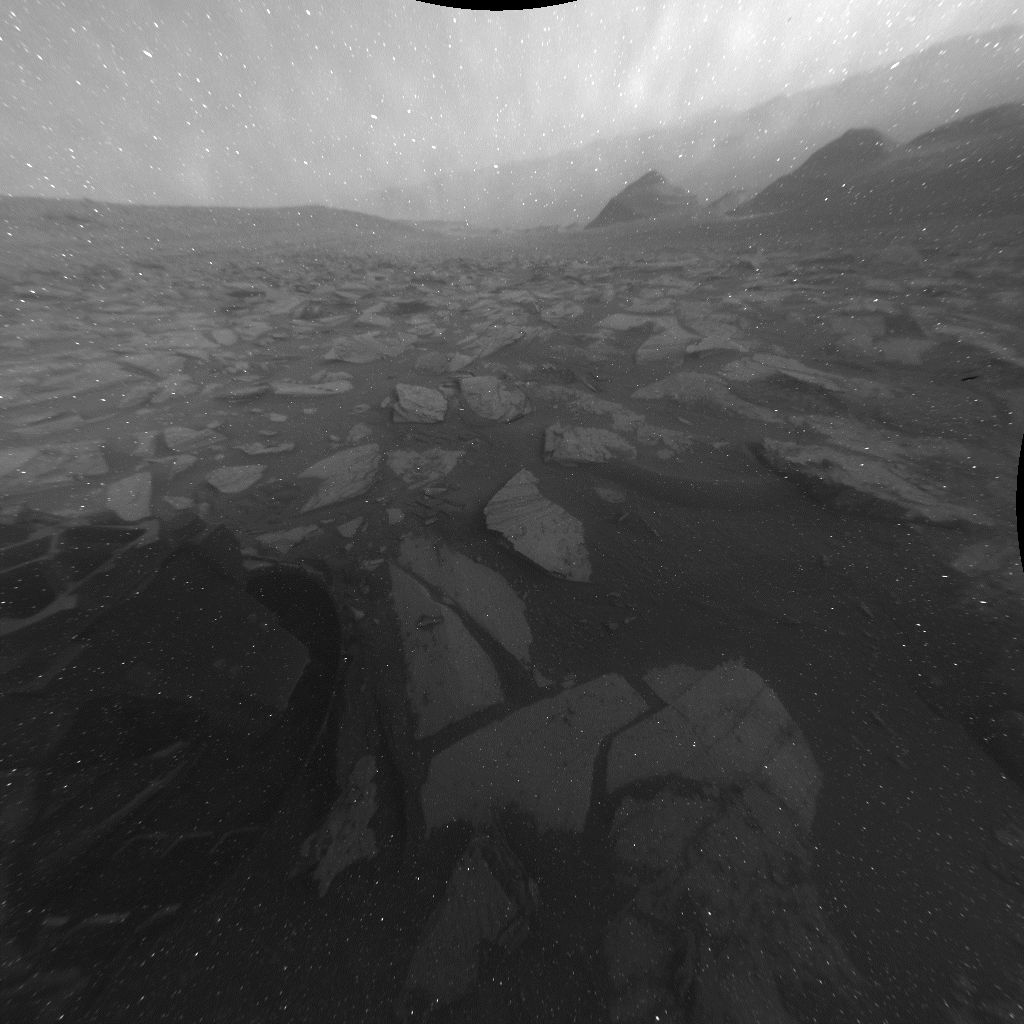the Wandering curiosity On November 8, 2023, the 4002nd Sol he spent on Mars, he was not bored either, although during these weeks there was no direct contact with ground control due to the position of Mars. At this time, Mars is “close” to the Sun when viewed from Earth, and the Sun is involved in maintaining radio communications in an unusual way. That is why, during each such event, NASA turns its Mars instruments into rest mode or makes them perform a pre-determined task that the instruments are capable of without any external interference. Environmental measurements also continue in this case, but the rovers do not move in these situations and do not take samples, for example.
Curiosity's controllers took advantage of such an opportunity a few weeks ago and programmed the command into the Mars rover's control system to take snapshots for an entire day during the rest period. The rover took images with the help of its hazard detection navigation camera, which produces monochrome images. (This camera provides data about rocks, slopes and other terrain obstacles in front of the rover.) The rover's recordings are programmed to capture something interesting in the weather, such as a cloud or dust swirl, by the spacecraft. Resting device. Unfortunately, nothing like this was found in the pictures, but it can still be used.
From the returned recordings, controllers then compiled animations, through which changes in lighting conditions on Mars could be observed. The animation consists of 25 images covering the time between 5:30 AM and 5:30 PM local time. We can see the rover's shadow moving across the Earth like a sundial, and we can also see sunlight, or the lack of it, in a small portion of the rover. The landscape that the rover's camera can see is the valley called Gedez Valles, which is located on the side of Mount Sharp. The rover has spent the past nine years climbing the 5-kilometre-high Mount Sharp.
At the end of the recording, it looks as if it is snowing on Mars – unfortunately, the rover did not see anything like this, only the hot pixels of the camera sensor appeared that way, due to the darkness, in the image taken with a longer shutter speed.
The vehicle's rear-facing hazard detection navigation camera also produced a similar sequence of images, which we can also view. This image was oriented more towards the Sun, so many artifact images appear due to the sun's glare, for example. The interesting thing here is the appearance of a small black spot on one of the frames, which was caused by a small cosmic ray colliding with the camera sensor. This camera looks at the floor of Gale Crater.
In the recordings, you can also see specks of dust stuck to the camera lens over 11 years.













































